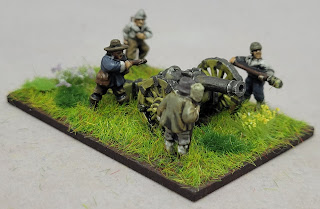Colonel Philip O’Reilly of Ballynacargy’s Troop of Horse

Somehow, despite the best efforts of real life trying to hinder my painting of little men, I've managed to make some more progress on my Catholic Confederation army. Here's the second of two units of cavalry. Philip MacHugh O'Reilly was the son of Hugh O'Reilly of Ballynacargy, County Cavan, and Katherine MacMahon. The family were deemed to be one of the ‘deserving’ native Irish families whose land was not taken during the Ulster plantation. Not to be confused with Hugh O'Reilly, the Catholic Archbishop of Armagh. Contemporary sources refer to him as a lawyer, but there's no existing evidence of him having attended Inns of Court in England. He may well have received legal training on the Continent, prior to accepting a command in the French army. Philip inherited the family estate on his return to Ireland. He would play an active role in local politics, holding a number of important roles, before being elected as MP for County Cavan in the 1640 parliament. As M...





